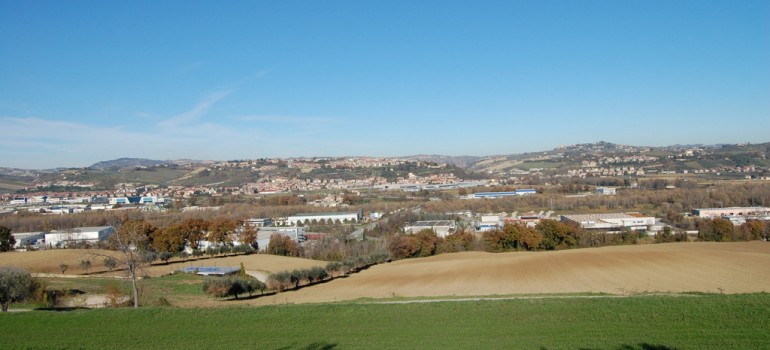
A few miles, eastbound on Salaria, is Castel di Lama, favorable place for settlements since the Neolithic, which returned numerous artifacts dating picena and rustic Roman villas. Despite its name, Castel di Lama was never a real castle, but the place of garrisons in defense of land holdings, the feud of Odoardi, one of the most important families in Ascoli. The free town was born December 6, 1543, in the area where they were before the castle of Sesto (XI-XII century) (in the area Chiarini-Piattoni) and the Castle of Serraglia, then Castrum Lamae in the Elder (XII-XIV century ). The name of Castrum Lamae is linked to the stream Lama east of the territory and the castle overlooking the hill and the valley of the river Tronto the major communication routes (Via Salaria). The ancient stones of the VII and VIII miles are still visible along the Via Salaria. In the eighteenth century mansions adorned the area, resulting in a characteristic mosaic development, called the Villas of the Lama. The parish church of Santa Maria in Mignano was founded in 1506; the City was endowed with their own statutes in 1545; participated in the War of the Tronto in 1556; in 1749 the territory of the Lama was erected at the Marquis by Pope Benedict XIV, at the request of the family Odoardi; In 1799 Napoleon’s troops were shot 16 fellow rebels; after the war the municipality had a huge commercial development, industrial, housing and social. Today a real aptitude agricultural, preserved in the cultivation of vineyards, olive groves, fruit trees, allows to Castel di Lama of having a well-ordered landscape, favored by the presence of seven-nineteenth-century villas, with private oratories and garden-parks. Among these, the villa saws Panichi, former residence of Odoardi, Lazzari Liberals villa, Villa Sgariglia Campolungo in town. The population of Piattoni, the parish church of St. Mary in Mignano (1506) contains interesting examples of religious art.